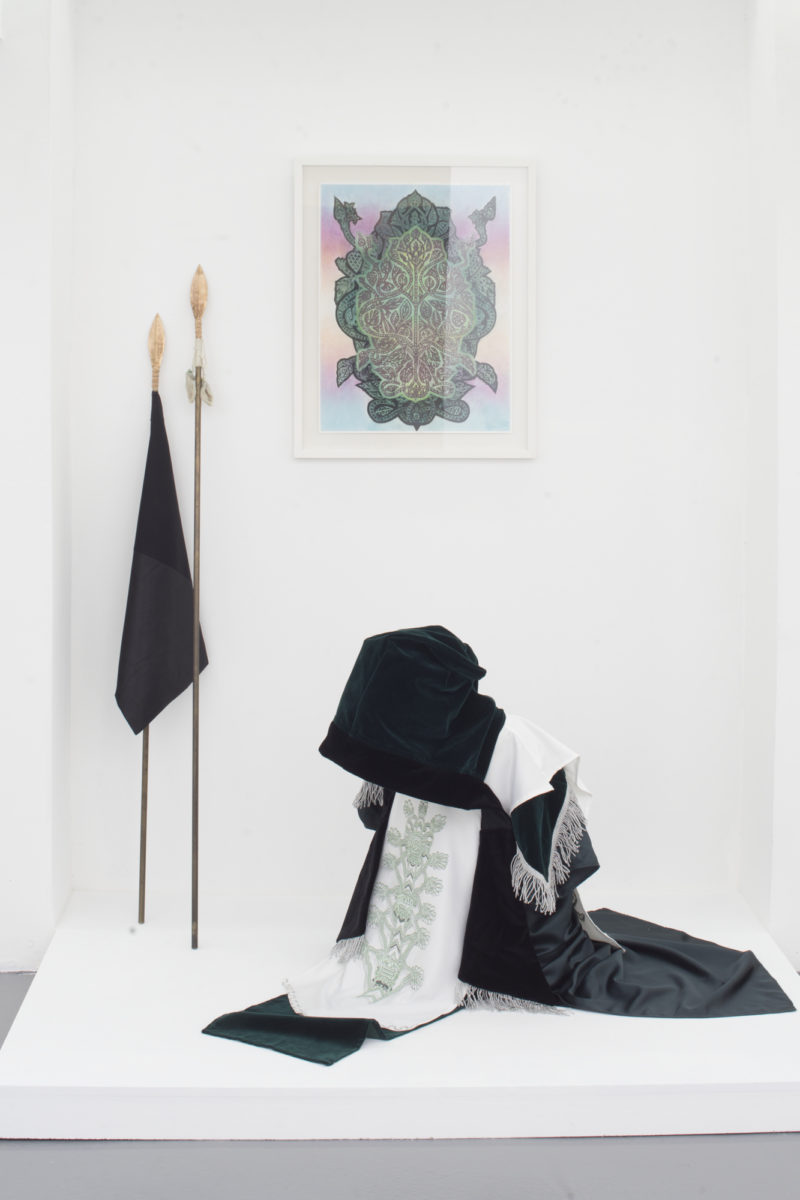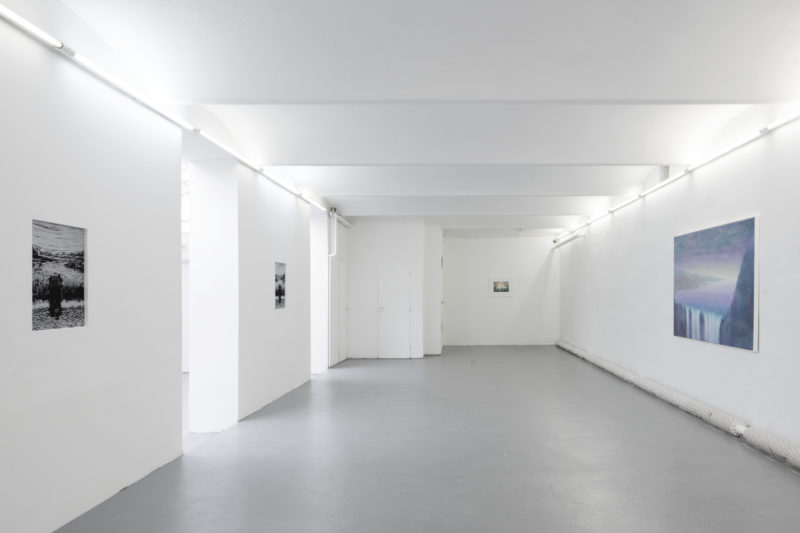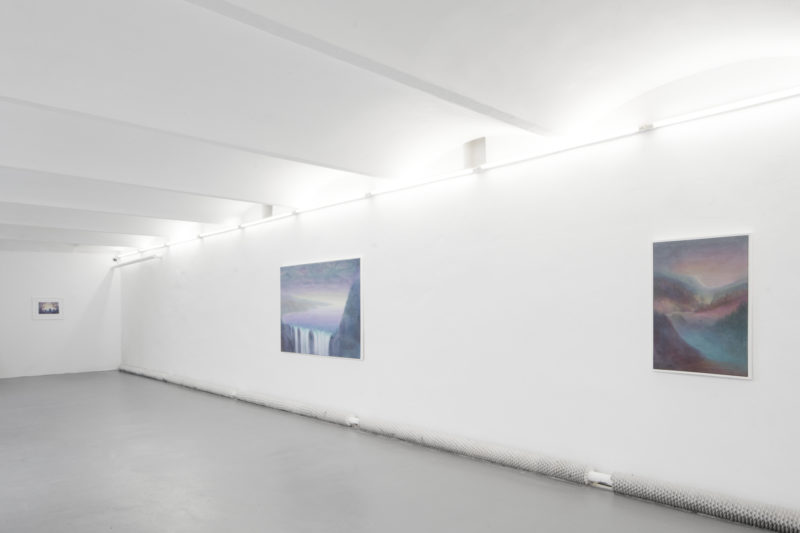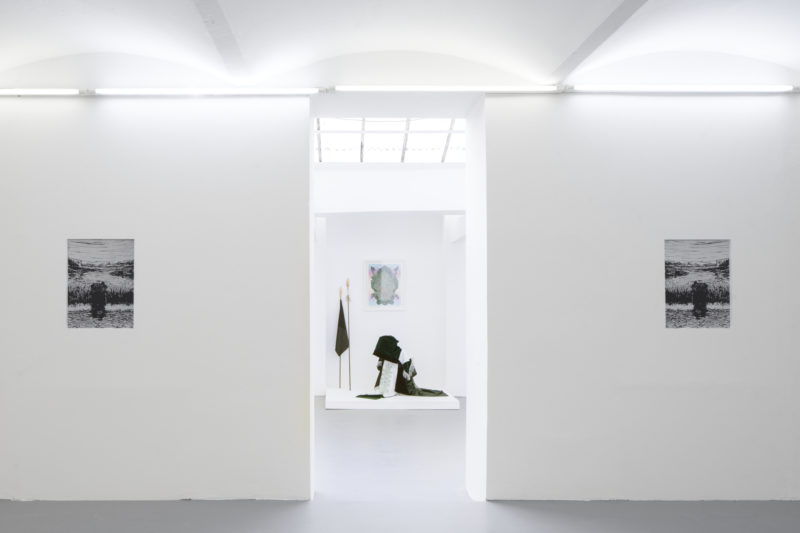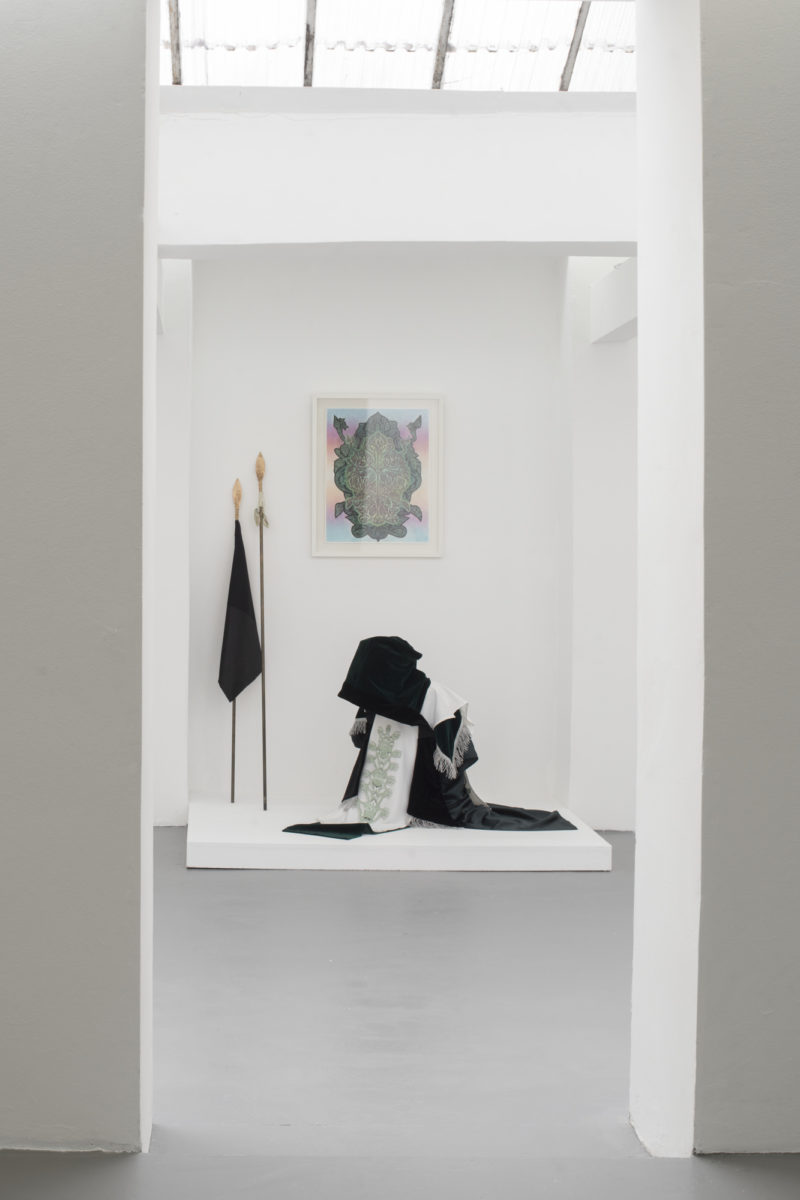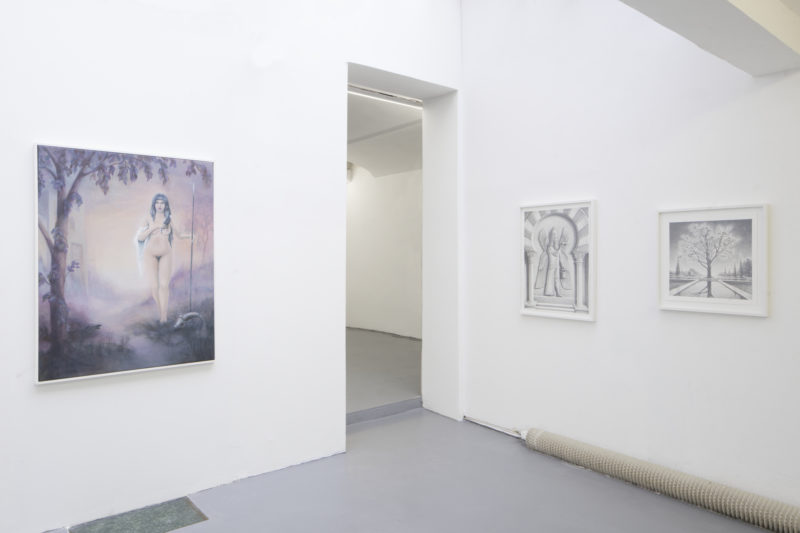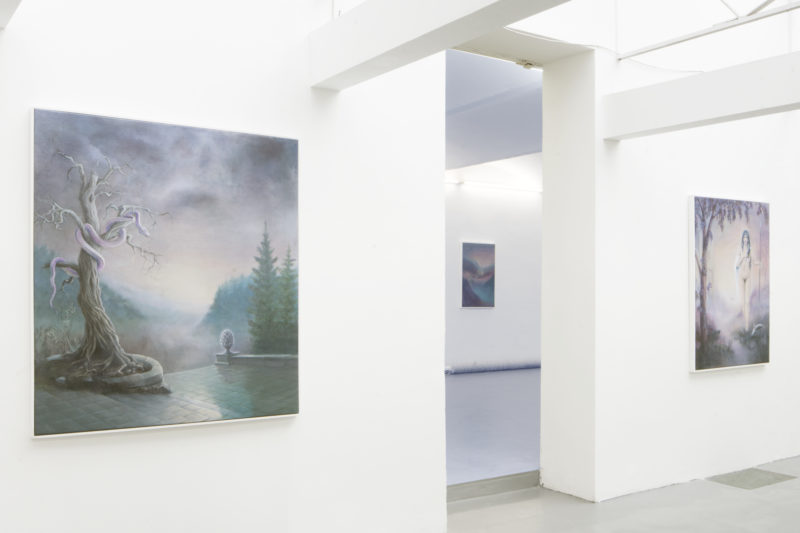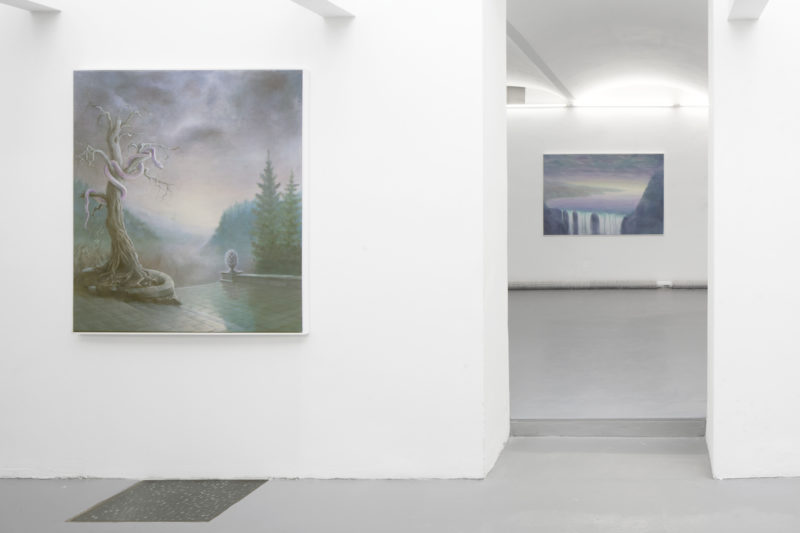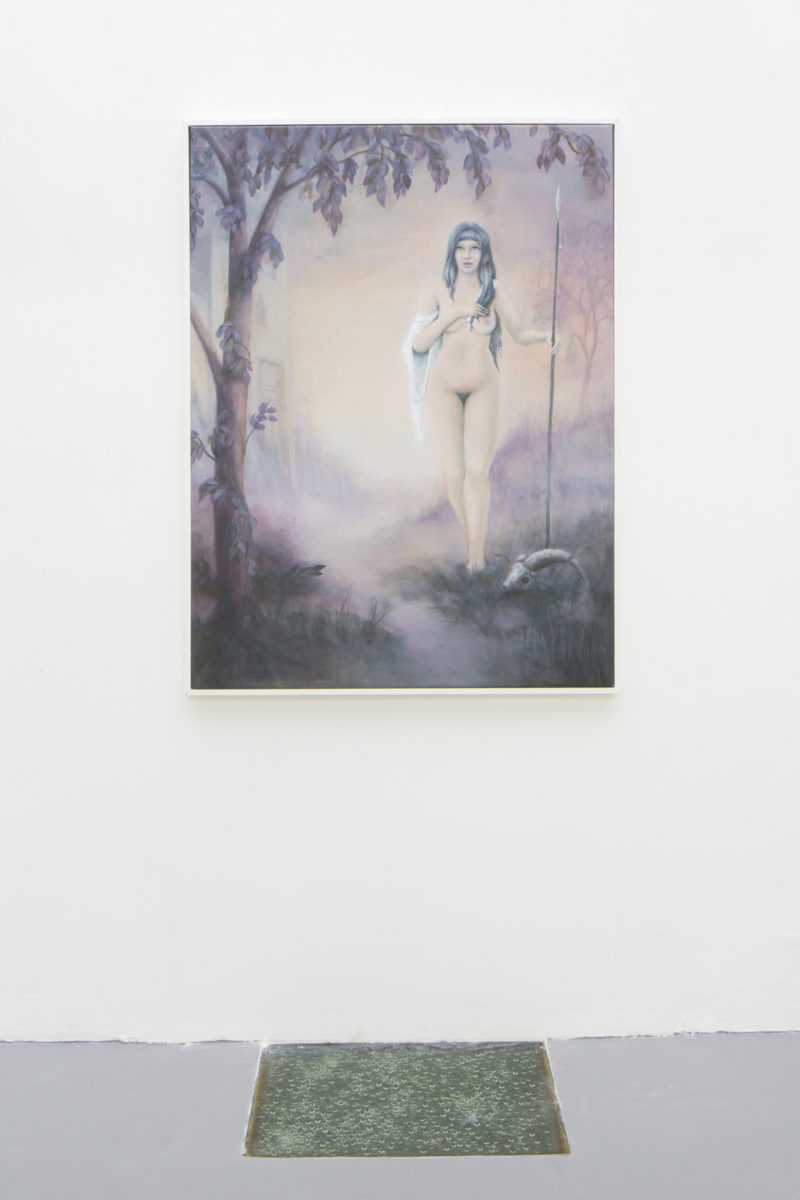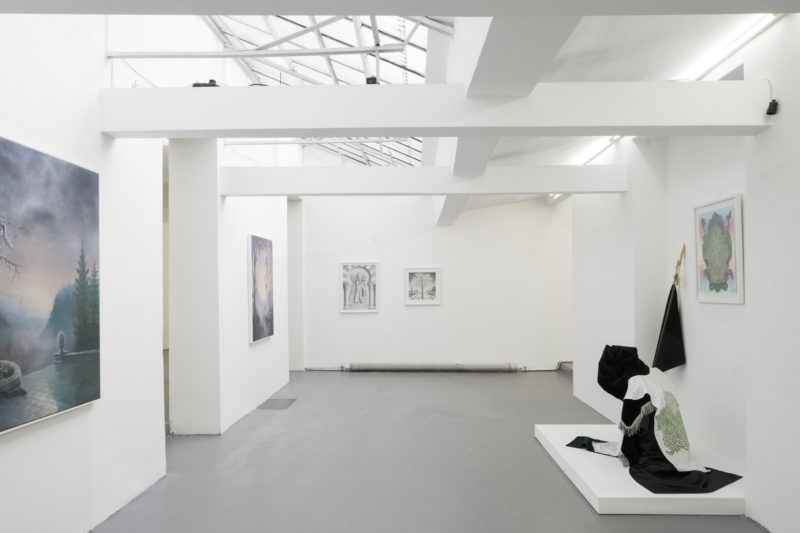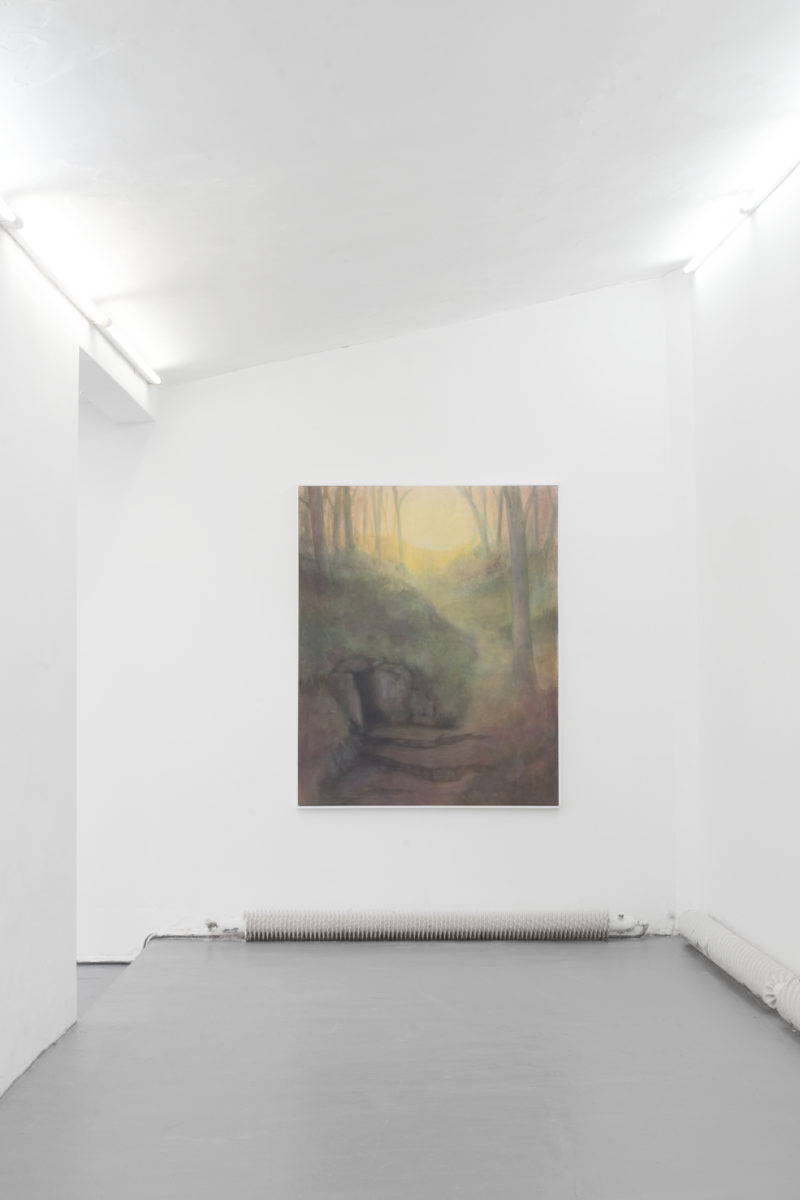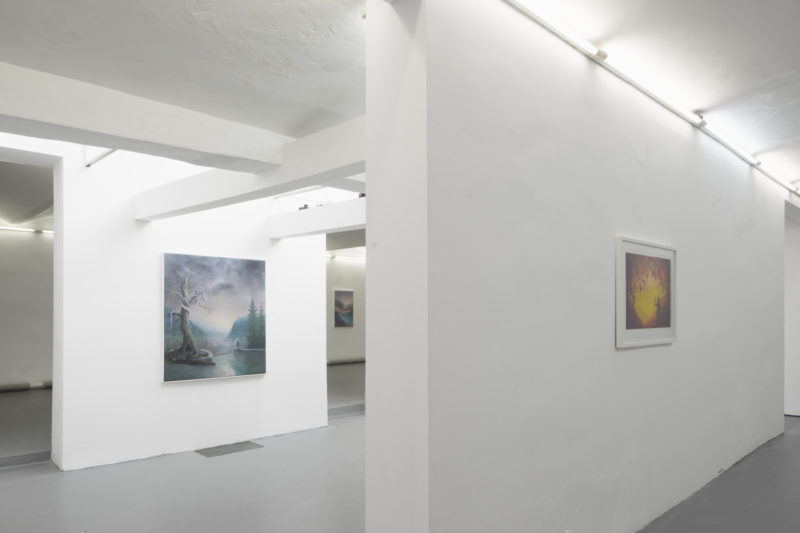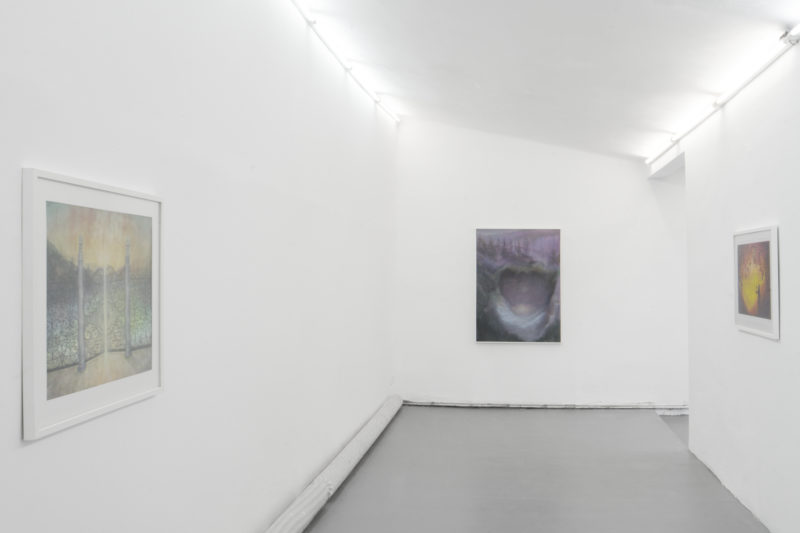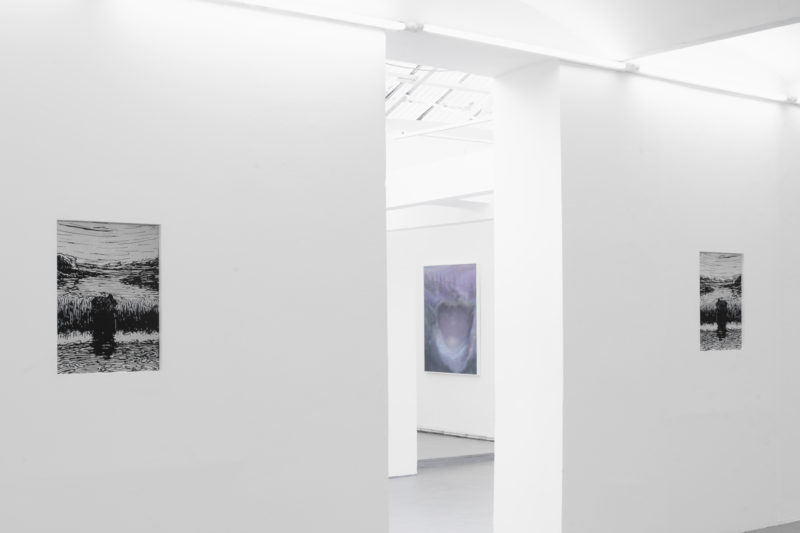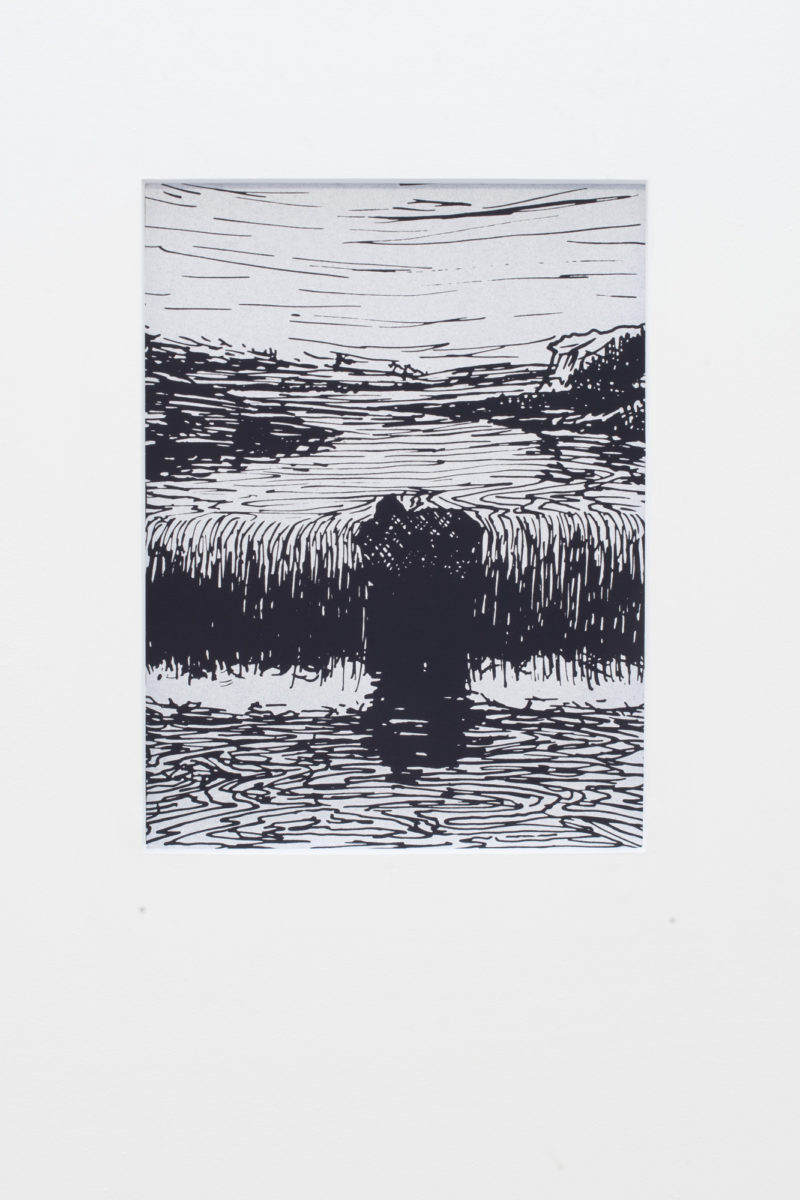Don’t go chasing waterfalls by Anders Grønlien at FUTURA, Prague
Anders Grønlien
Don’t go chasing waterfalls
FUTURA, Prague
December 5, 2017 – February 18, 2018
Curated by Michal Novotný and Lumír Nykl
Is it possible to fulfill dreams by your will, is it worth to chase for a sense in a devastatingly changing world? Is it better to withdraw into a subjective world, flee into the arms of nature and turn into your own inner world? Anders Grø nlien could be: – a forest troll with a noisy feedbacking guitar on crouching on a raft in the middle of a pond in the Prachov Rocks next to a tea house? – a kneeling ritualist dressed in a costume made from a fabric used in the Catholic paralithurgic processes in Cordoba, covered with a patch, in which the (pre)islamic ornament overlap in the free symmetry? – a neo-romantic painter and sculptor with a subjective imagination, working intuitively but with a sense of mystical meanings, perceiving nature in a melancholic manner and transmitting its image onto the canvas with a sentimental effort to re-present the “hieroglyphic” language of nature?
The early romantic image of nature as the world of spirit and symbols that a human revives for himself is hidden in every misty color spot. Many years ago, art was supposed to blend with nature in one, but instead, nature was exploited by western painting, just as nature had been transformed into resources in favor of a logic based on industrialisation and market. The early modern attempts to search for a new comprehensible allegory in the sense of the intuitably understood natural signs of the image have, in the recent art, been shown to be confident in the general comprehensibility of mass-spread commercial codes and corporate meaning formulas. Artists such as Anders Grønlien flee from this position to the vision of universally communicative sense of nature.
The meaning of Aries’ skull at the foot of a half-clother hunter with a javelin lies somewhere between the self-irony of astronomical memes and the sacrificing of obsolete masculinity on the altar of irreversible future-to-be. Understanding the parable of a tree of life with roots in a meeting point of four rivers can only be as fragmentary as a keyhole in the shape of a Moorish arc. The colonial heritage of the uprooting of ancient cultural patterns overshadows the possibility of understanding the mythological elements otherwise present across cultures. A similarly picturesque forest scene with a fox and a cave can be interpreted as a sophisticated visual commentary on the Renaissance heritage of Plato’s philosophy, as well as the doom metal joke about stoner’s crib. Stylishly related neo-pagan costumes and props are then preserved as an exposition of the Ethnographic Museum situated in a walking distance from the gallery, including a refined sound design installation of field recordings of rain and intermittent flow of the stream. The symbolic meanings seem as mysterious as the water flowing from the marine fjord to the inland.
The corner stone is a relief-based ritual of fertility being done by sprinkling with a cone. It puts into motion the whole intertwined structure of incarnate meanings: The value of paternity and desire for proximity and the cycle of procreation, birth, education, loss and alienation. The suppressed and overwhelming consciousness of the swift changes that spark over the horizon of a privileged Northwest perspective. Detained catastrophes and displaced inequalities invade the world with a strenght of waterfall that knocks our face to wet Andalusian tiles mirroring Norwegian landscape. Meditation in front of the gates of the Garden of Eden varies with the rift of the ritual javelin in the indictment of the world of fences that divide mankind as sadness over the existence of the boundaries that we stand between ourselves by not being able to see the consequences of our actions in good faith to change for the better.
-Lumír Nykl

